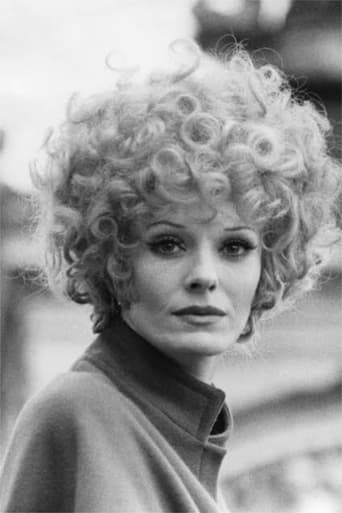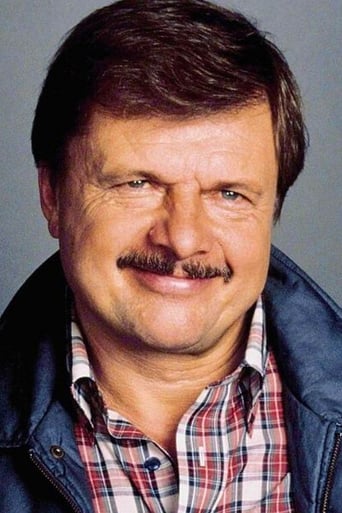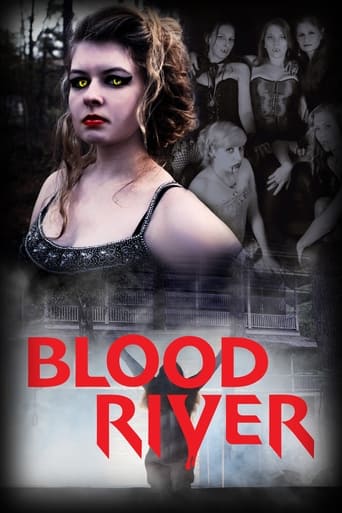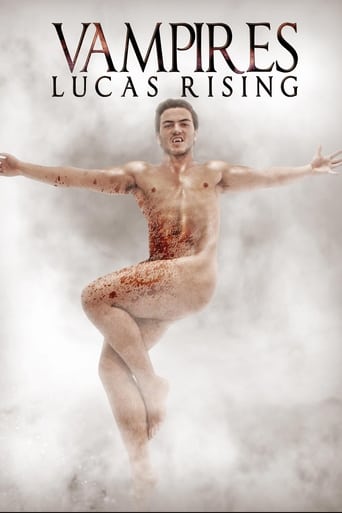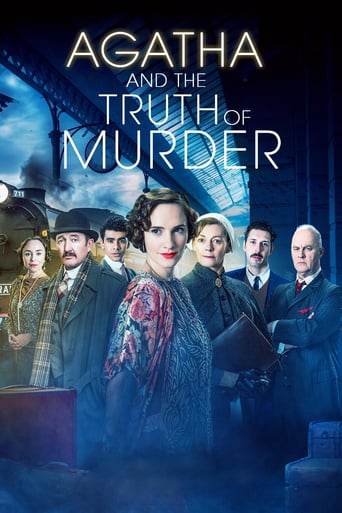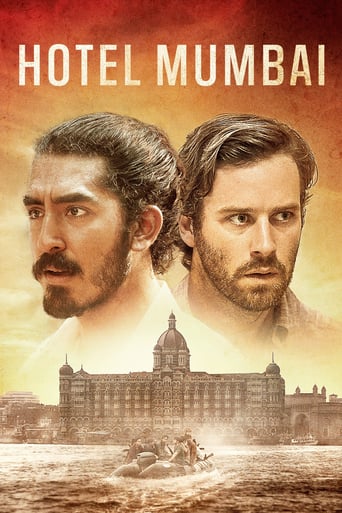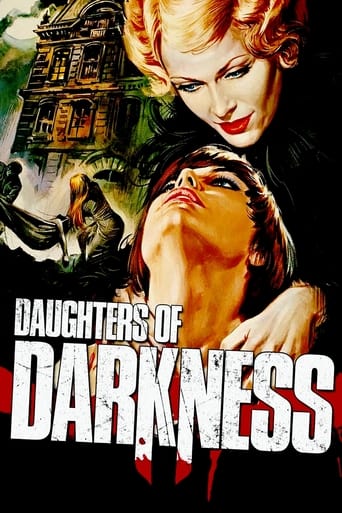

Daughters of Darkness (1971)
Ostend, Belgium. In a decadent seaside hotel, Stefan and Valerie, a newlywed couple, meet the mysterious Countess Báthory and Ilona, her secretary.
Watch Trailer
Cast


Similar titles
Reviews
Stefan, a major weirdo with a strong penchant for sadism, has just married Valerie. They honeymoon at an empty old hotel and soon they are joined by Countess Elizabeth (a MEGA weirdo) and her 'friend', Ilona. During this time, you see a lot of nudity and the Countess clearly is grooming Valerie to be her next sexual play thing.Around the time "Daughters of Darkness" came out, in the 1970s, there seemed to be a trend involving lesbian vampires. In addition to this film, "Vampiros Lesbos", "Vampyres" and "The Blood Spattered Bride" (among others) also has salacious plots involving lesbian vampires...and featured copious amounts of nudity. Why this was a relatively common sort of film at that time, I have no idea...and perhaps it was more a case of folks trying to cash in on the success of the previous picture. What makes "Daughters of Darkness" different is that it features ample amounts of sadism and talkiness.....lots and lots of talkiness. Many times through the course of the film, the famed sicko from history, Elizabeth Bathory, just talks and talks and talks. I think it's supposed to be sexy but when seen today, I could also see many folks very bored by these portions of the film. So you have an odd combination of suspense, lovely nude people strutting their stuff AND incredibly boring and pretentious dialog. The traffic accident scene, while an interesting idea, was incredibly badly filmed. Overall, it's a very mixed bag...one that is enjoyable, rather kinky and dull all at the same time.
Beware as you go into this, it may sound like Hammer but it's nothing like it. It's a chic, stylish vampire film dripping with the most wanton aestheticism. The whole thing exudes the scent of an absinthe dream, the contours of a flowing red dress.Superficially it is about a couple of newly-weds - but who, as the film opens with them having sex in a train cabin, openly declare that they don't love each other - who find themselves stranded in Ostande and move in to a strangely empty hotel for a few days. A countess Bathory arrives there with her female companion, there's also the baffled concierge who tries to stay out of passion's way.I say superficially because the dynamics between the couple is what at first sight seems to be driving the story. The woman is desperate to break out from the limbo of anonymous sex and be introduced, thus be legitimized as a wife and woman, to the man's mother, an aristocrat back in England. The man, on the other hand, is content to derail those expectations and savour the erotic dream he has concocted to inhabit.But of course we come to understand that the narrative is powered from outside. The countess courts both, seducing in the emotional space between them. She personifies that wanton aestheticism right down to her body language. It is important to note that she is played by the actress who starred in Marienbad for Resnais, which this film alludes to; in the mysterious hotel setting with its expansive balustrades, in the twilight wanderings, in the sense of time revoked and sensations amplified.She is the architect of all this, building around these people the desires that will yield them to her. So it is the man's semi-conscious world of secret pleasures, but it's she who is slowly, slyly perverting them. She does this with the malevolent purity of a femme fatale.It does not matter that she is Bathory, or that blood is eventually savored from wrists, this is merely the desire made visible in a way that would appeal to a niche audience. So even though Jess Franco borrowed the velvety sunsets and decadent air from this for Vampyros Lesbos, this operates deeper. It matters for example that she seduces the man into a new obsession with violence, the destructive flipside of eros. It further pries the woman apart from him.Gradually what was a matter of taking pleasure from flesh is spun into something else entirely; again involving flesh but now literally draining from his.It ends with a stunning sequence across countryside roads; a lot of the imagery recalls L'Herbier - who also inspired Resnais - but here more pertinently. The soul has been so withered away from inside, so consumed from the fever of passion, that mere sunlight sends it reeling. Of course we can explain away by falling back to our knowledge of vampire lore, but we'd be missing on the finer abstractions; how, for example, the femme fatale is magically cast into the circumstances that, as we know from our knowledge of this type of film, would precipitate her demise. Nothing else would do after all.If we follow the set of reactions from what at first sight appears like an accident, it can be plainly seen how it all flows from her desire to control the narrative.It's marvelous stuff just the same, the colors, the desolate aura. I just want to urge you to see as more than just an 'artsy vampire flick'. Save that for Jean Rollin.
The 1970's were the peak for the lesbian-vampire films. They varied from being more mainstream titles such as Hammer's "Carmilla" adaptation "The Vampire Lovers", to more deliberately artsy, trippy works such as Jess Franco's aptly named "Vampyros Lesbos" as well as basically every Jean Rollin film, such as "Shiver of the Vampires" and "Fascination". They all seemed to have been inspired, one way or the other, by Roger Vadim's exceptional "Blood and Roses", but none more so than "Daughters of Darkness", which is most definitely a cut above your regular Eurotica. But whereas "Blood and Roses" is a lonely, delicate film, "Daughters of Darkness" is a bolder, darker and disturbing slice of the genre. I have a slight preference for "Blood..." if only for it's one of the few films that can make me cry, but that doesn't diminish the impact of "Daughters..." at all - in fact, it may even be the better of the two. As usual for an Eurohorror, this is a visually breathtaking work of art. Harry Kumel's mise-en-scene is simply phenomenal, with almost every shot being a knockout of imagery and aesthetic delight. The first two colorful death scenes are bound to make Dario Argento envious. From the lush but eerily deserted hotel interiors to the breathtaking shots of the Belgium twilight, accompanied by François De Roubaix's minimalistic but effective score, this is a visual and aural feast. Still, so far it doesn't diverge much from the norm. What makes it stand above the titles mentioned above, is that "Daughters of Darkness" is a very well written film with extremely developed characters - a rarity for the genre. Set in a vacant hotel whose sole guests are two young, healthy and happy newlyweds and a mysterious Countess and her assistant. Judging by her name alone - Elizabeth Bathory - it's not surprise that the mysterious aristocrat is a vampire, and the one responsible for a series of murders in the area. She sees the couple as both possible lovers as well as prey. The couple itself soon turn out not to be what they initially seemed, as the husband in particular seems to have more than his share of skeletons in the closet. The Countess begins to realize this and soon, she begins a terrifying mind-game with the two, draining them first out of their sanity and moral values, and then out of their blood. Kumel doesn't seem too interested in fangs and vampire attacks, but rather in creating a claustrophobic, decadent atmosphere of psychosexual madness, that grows tighter and tighter as the story progresses, to the point of becoming almost unbearable, but yet, you just can't take your eyes off the screen. The amazing use of editing, quite ahead of it's time, helps in creating this bewildering, grueling atmosphere of a fever dream, mostly through rough and rapid cuts, or intercuts between different scenes. Another extra point is due to Delphine Seyrig's timeless portrayal of Elizabeth Bathory. Sporting the looks of a once glamorous but now decadent 1930's actress, she is seductive and beautiful, but yet something not quite right with her. Opting for a relatively low-key performance, she relies on her strong screen persona, with her husky voice and enticing body language that lures the characters as well as the audience into her dark, twisted world. Her casting is all the more ideal considering the film's constant references to Alain Resnais' "Last Year in Marinebad", of which she was the star. Danielle Ouimet and John Karlen, while not on the same league as Seyrig, but are quite good. Karlen is particularly convincing as another tortured soul who, like Bathory, possesses a vampire-like fascination with violence, and is driven by madness by his own unwholesome backgrounds. Andrea Rau as the Countess' lover Illona doesn't have to do much other than look pretty, but she gives a hysterical and haunting, if brief, showcase during her particularly nasty bathroom death scene - possibly the film's saddest and most cringe-inducing set piece. The film's two more noticeable flaws are the somewhat silly final scene and the police officer character, which detracts from the story. The latter's death is a somewhat humorous moment that feels out of place with what had been seen before. These flaws, however, are minor and easy to ignore, specially since you consider it's degree of excellency in almost every other level. Overall, this is a fascinating, unique lesbian vampire film that definitely ranks among the very best of it's kind. It may not be for everyone, but those looking for a more psychological, emotionally raw take on this often used theme, you simply can't go wrong with "Daughters of Darkness".
The follow-up to Kümel's "Malpertuis" (from Jean Ray's book),"Les Lèvres Rouges " has got a much simpler screenplay and ,with one exception no great stars (no Orson Welles,Michel Bouquet,Susan Hampshire ,Jean-Pierre Cassel.....)....One star ,but what a star!Delphine Seyrig was one of the greatest stars France had ever had.She mesmerized her audience as no actress of her generation could;her death was a major loss for the European cinema.She could play the fairy godmother of "Peau D'Ane ",the dumb bourgeois lady of "Le Charme Discret De La Bourgeoisie" or the legendary bloody countess -many historians do not believe in those blood baths -with the same aplomb;three parts so different and the same woman with the same suave voice -you MUST hear her speak,a dubbed version would be a disaster;so make sure you get a DVD with subtitles.I have always thought Belgian directors were very good at creating a supernatural atmosphere without using a ton of special effects;like Delvaux in "Un Soir Un Train" ,Kümel makes the simple picture of a train which comes to a standstill.The baroque hotel will remind some users of "L'Année Dernière A Marienbad" ,Seyrig's debut in France.It's to state the obvious to write that Seyrig steals every scene she is in and fortunately she's featured in many scenes ;the three other leads seem bland by comparison and it takes all the talent of the director to pull them off."Les Levres Rouges" gave a renewed life to the vampire movie ,like Polanski's "the fearless vampire killers" did in the precedent decade .A strong lesbian interest in this movie too:Seyrig was so hot she could appeal to both men and women.


